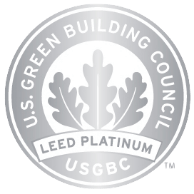New York’s skyline isn’t just impressive — it’s a reflection of the world’s best ideas in one place. From 1,100 feet up at SUMMIT One Vanderbilt, it’s easy to see how styles from across the globe have shaped what defines New York’s modern architecture today. The mix of old and new, classic and modern, tells a story of international collaboration that’s still unfolding.
New York has always embraced architectural diversity. Early on, the city welcomed bold new styles brought by immigrant architects, from Gothic-inspired churches to Beaux-Arts public spaces. Art Deco skyscrapers rose in the 1920s and ’30s, blending global influences with American ambition. Later, minimalist buildings brought in clean lines and functional beauty drawn from the Bauhaus movement.
It’s a city shaped by many hands, and you can see the impact of those global ideas clearly from SUMMIT’s panoramic view.
Art Deco’s Legacy: A Spark of Global Influence
Few skyscrapers capture the essence of international inspiration quite like the Chrysler Building. Designed by William Van Alen, its soaring crown, punctuated with triangular windows and radiant steel curves, draws on global currents of the Art Deco movement. Though deeply rooted in American optimism, the Chrysler Building’s Art Deco features showcase influences that span from European decorative arts to ancient Egyptian motifs, all refined into a distinctly New York expression of the machine age.
Just a short walk from Midtown’s towers, the New York Public Library’s Stephen A. Schwarzman Building stands as another testament to global vision. Completed in 1911 and financed in part by German immigrant John Jacob Astor, this Beaux-Arts masterpiece was designed by the architects John Merven Carrère and Thomas Hastings to echo the great libraries of Europe. Its marble façade, Corinthian columns, and majestic entrance guarded by the now-iconic stone lions reflect classical ideals of knowledge and public service, drawing inspiration from French and Italian design traditions. The library’s grandeur and accessibility make it not just a cultural treasure, but a symbol of how immigrant ambition and international aesthetics have helped shape New York’s civic heart.
Both structures highlight how New York has always welcomed international ideas and turned them into something distinctly its own. But while the Schwarzman Building and Chrysler Building hold a beloved place in the architecture of NYC, they represent just one chapter. Modern visionaries continue to bring new interpretations of global design, adding layers to the city’s ever-evolving architectural language.
Today’s skyline demands a new kind of creativity—one that honors the past while answering the future’s urgent call for innovation and responsibility. SUMMIT One Vanderbilt rises to that challenge as a symbol of contemporary global thought.
Architects at Kohn Pedersen Fox, the firm behind One Vanderbilt, embraced ideas found in Scandinavian design, emphasizing light, transparency, and a strong connection between humans and the environment. SUMMIT’s interiors, shaped by the renowned Norwegian firm Snøhetta, infuse elements of openness, fluidity, and sustainability that reflect the best of today’s international design dialogues.
It is no coincidence that SUMMIT stands among the greatest of New York’s iconic skyscrapers. What sets it apart is its staggering height, mesmerizing views, and commitment to pioneering sustainable urban design practices. Systems for energy conservation, air and water quality, and eco-conscious building materials allow SUMMIT to push the city’s architecture toward a greener, more globally responsible future, all while maintaining the wonder that defines New York.
A View That Connects Continents
Looking out across the vast cityscape from SUMMIT One Vanderbilt feels like turning the pages of a global storybook.
To the north, Central Park stretches like a green oasis amid the concrete, a reflection of 19th-century landscape ideals that originated in European urban planning. To the south, the slender spire of One World Trade Center speaks to a new era of resilience and forward-looking design. Hudson Yards’ shimmering towers echo contemporary Asian skyscraper trends, blending innovation with aesthetic spectacle.
Landmarks born from immigrant visions, from the Empire State Building to Rockefeller Center, crowd the horizon. Each structure, in its own way, carries the mark of international influence, whether through technique, materials, or philosophy.
Walk through SUMMIT One Vanderbilt on any given day, and you’ll be surrounded by the sounds of the world — a symphony of languages like Spanish, Mandarin, French, Arabic, and dozens more echoing through the space as guests from across the globe take in the view. New York City has always drawn global travelers (around 64 million visitors in 2024 alone, 12.9 million of whom were international tourists), and SUMMIT has quickly become a magnet for this international crowd.
Since opening, SUMMIT has welcomed guests from over 200 countries and territories. If you can find a nation on a map, chances are someone from there has set foot into this sky-high cultural attraction in Midtown Manhattan. By the end of its first year, 1.4 million guests had visited, representing 142 of the 193 United Nations-recognized countries. Today, that number continues to grow toward a full global roster.
This global diversity was part of SUMMIT’s mission from the start. Planners envisioned SUMMIT as a place that embraces cultural diversity in NYC, ensuring every visitor would feel welcome and included. From multilingual signage and staff to the choice of universally resonant art motifs, inclusivity was built into the experience. The result is that any person can walk into SUMMIT and see aspects of their own culture and identity mirrored back at them.
A New Yorker might share an Après café table with a family from Dubai, or a student from Sydney might exchange photo-taking duties with a tourist from Nairobi. Such chance interactions are common, and they are exactly what make New York special.
Walking through SUMMIT, you truly get a sense that New York City is a global city not just in theory, but in person. There’s a certain joy in hearing a dozen different accents exclaim “Wow!” in unison as the skyline comes into view. It reminds us that the love of a beautiful view transcends language.
It’s also worth noting that Midtown Manhattan sites like SUMMIT sit at the crossroads of this global tourism flow for good reason. Midtown is home to icons like Times Square, Broadway theaters, Grand Central Terminal, and more iconic landmarks that draw international travelers year-round.
SUMMIT, located right next to Grand Central, has naturally joined that list of must-visit destinations. Its location and reputation make it a melting pot every single day. One moment, you’re standing next to a fashion blogger from Seoul livestreaming the mirrors; the next, you’re in an elevator with a soccer team from Argentina on a celebratory trip.
Midtown Manhattan brings people together, and SUMMIT amplifies that unity by design. By the time you descend back to city streets, you might realize you’ve not only seen New York from new heights, but you’ve also glimpsed a bit of the whole globe in a single New York moment.
Visiting SUMMIT One Vanderbilt isn’t just an ascent into the clouds; it’s a rare opportunity to witness how global ambition, artistry, and engineering come together to create the awe-inspiring cityscape of New York. With each step, visitors move through an environment that honors international design traditions while imagining a more sustainable, interconnected future.
Seen from SUMMIT, the skyline rises as a shared expression of global design. And it invites everyone who gazes upon it to dream even bigger.
Ready to see it for yourself? Book your visit to SUMMIT and experience the moment when the world truly meets the sky.
| Hours — |
|
||||||||||||||||
| Address — |
45 E 42nd St, New York, NY 10017
Entrance located on the Main Concourse of Grand Central Terminal |
||||||||||||||||
| Connect — | |||||||||||||||||




© 2024 SL Green. All rights reserved.